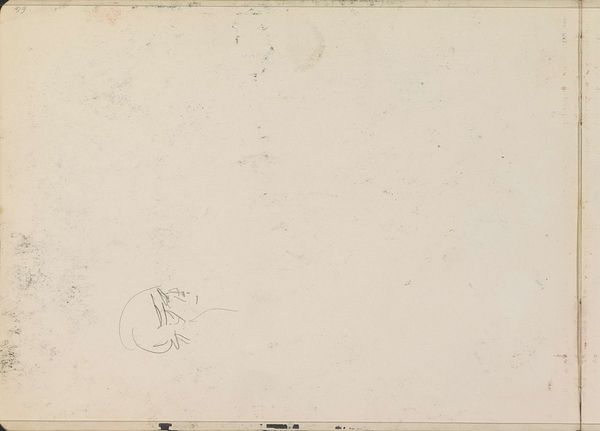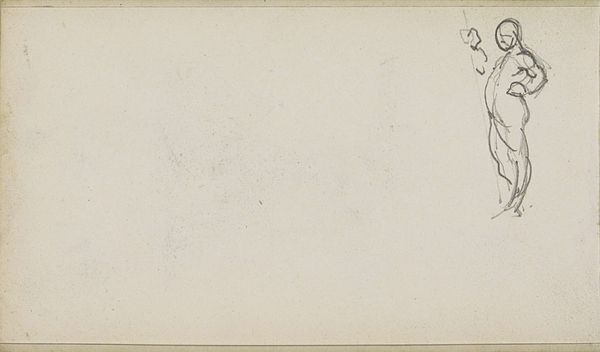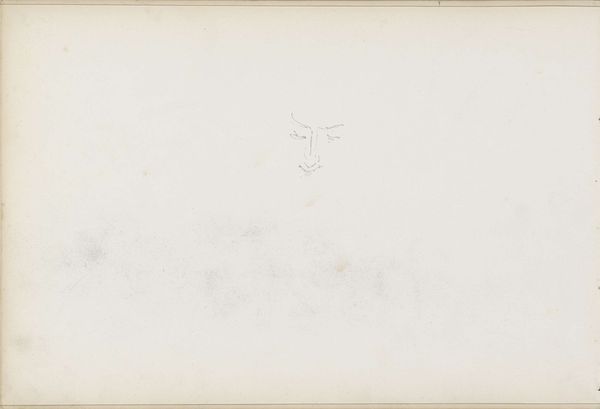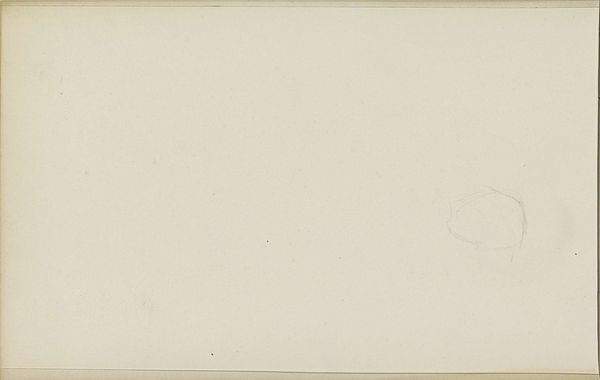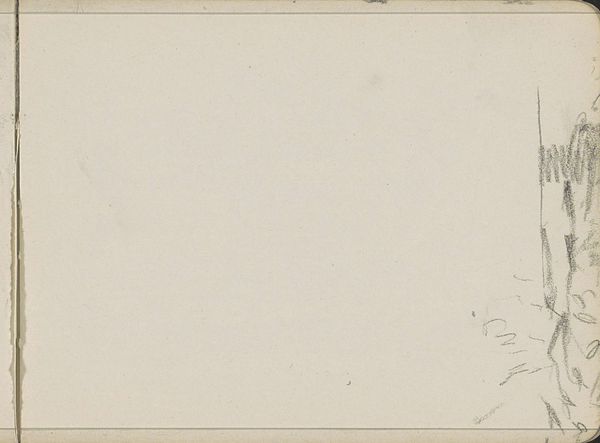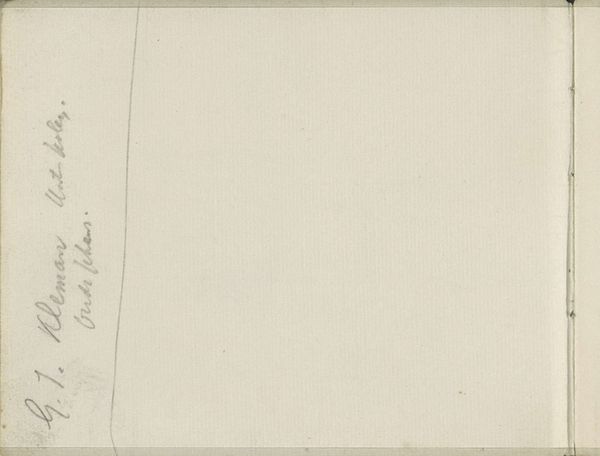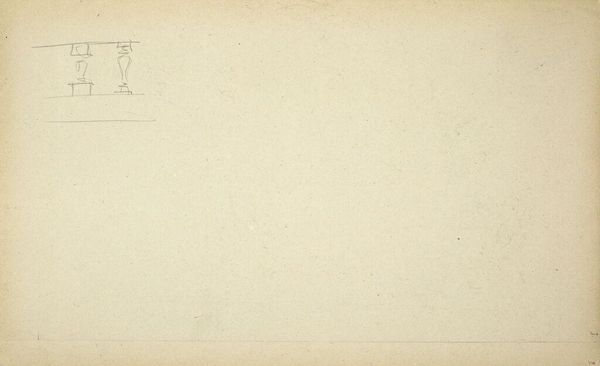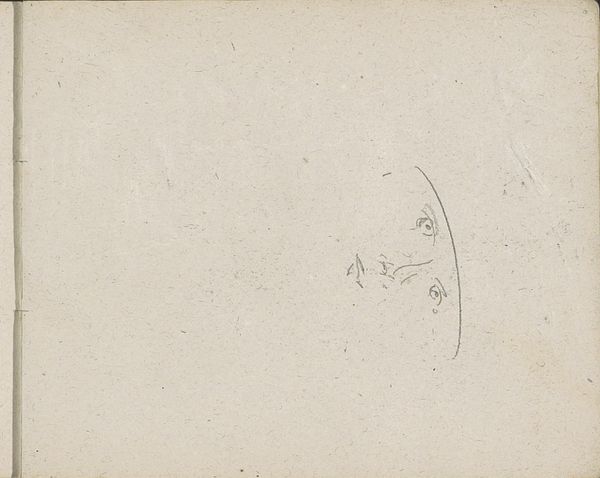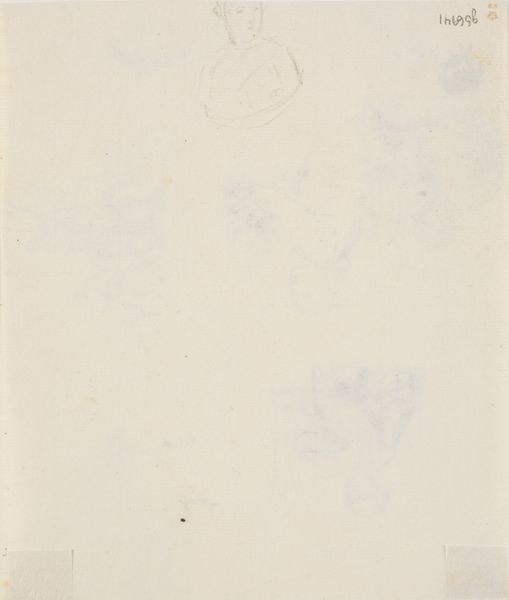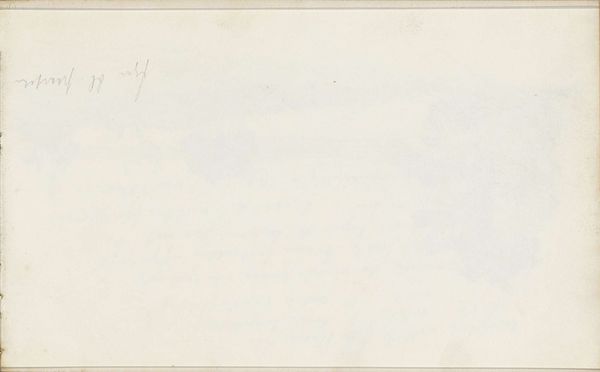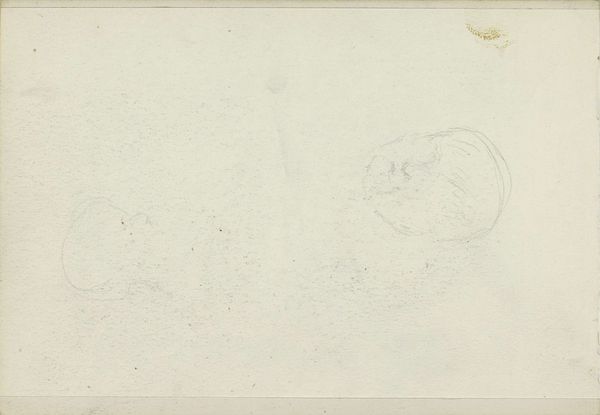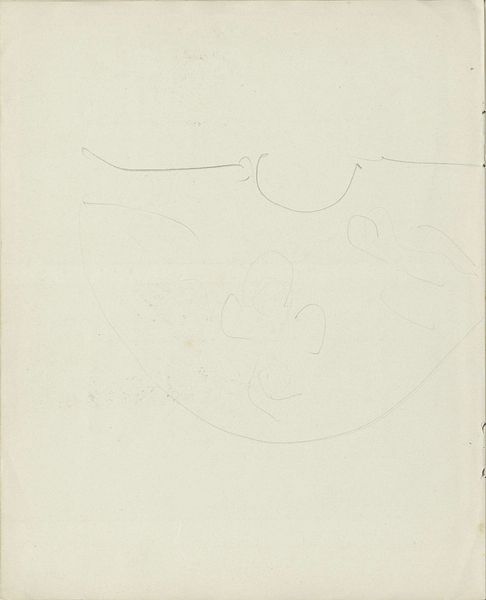
drawing, paper, pen
#
drawing
#
paper
#
abstraction
#
pen
#
modernism
#
watercolor
Copyright: Rijks Museum: Open Domain
Curator: Here we have a drawing on paper entitled "Studie," attributed to Cornelis Vreedenburgh, dating sometime between 1890 and 1946. Editor: Sparse. That's the word that comes to mind. There's an almost ghostly quality to this blank page with its lone, enigmatic form near the bottom. What is it supposed to be? Curator: That's precisely what makes it interesting, isn’t it? Vreedenburgh, though often associated with more traditional landscapes, seemingly veers into abstraction here. Looking at this through the lens of modernist movements, this study reflects an exploration of form and reduction, echoing similar pursuits by artists dismantling established representational conventions. I see in this drawing the seeds of a new visual language. Editor: Visual language, perhaps, or the ruins of one? I keep returning to that little shape. To me, it suggests an inverted shield or a stylized fountainhead. Perhaps even a gravestone, and those marks might be numbers that represent dates. The longer I observe, the more melancholic and symbolic the marks become, loaded with the weight of tradition turned upside down. Curator: Tradition being upended—I agree. In that light, we could interpret this as a commentary on the waning power structures after the turn of the century, particularly in the Netherlands. The ambiguity forces us to consider our own perspectives, informed as we are by histories of colonialism and shifts in political power during the timeframe in which it was likely drawn. Editor: Or maybe it is an unrealized crest or symbol for something entirely new. Given its minimalistic nature, and taking into account that modernism strips bare inherited form, I am inclined to wonder about utopian social visions that might lie hidden within. After all, doesn't every new dawn need its insignia? Curator: Intriguing. I hadn't considered the optimistic angle. It really highlights how deeply historical context, both visible and submerged, influence our understanding. Editor: Yes. Ultimately, I think its ambiguity might be its strongest point. It speaks through absences, silences. Curator: A study, indeed. A study that continues every time someone stops to look and, crucially, to *think* about it.
Comments
No comments
Be the first to comment and join the conversation on the ultimate creative platform.
